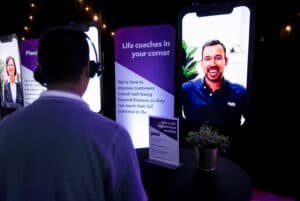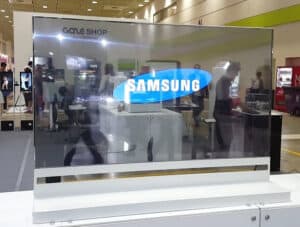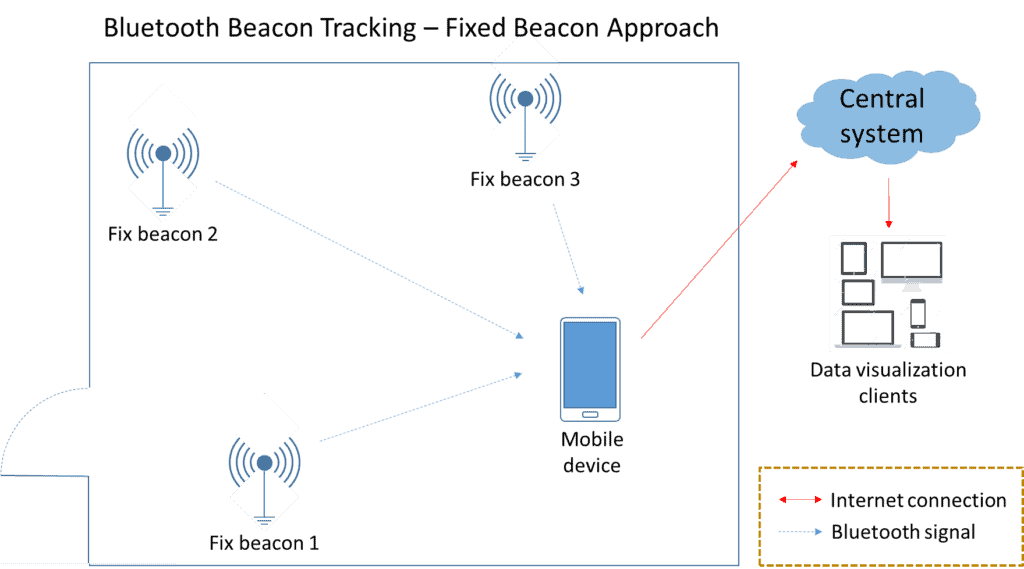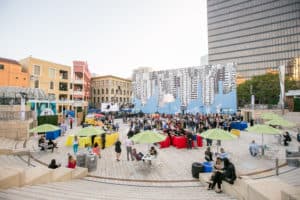The Latest Event Technology Trends
Technology is transforming the events industry just as it is with many others. Recently, we have seen a surge in the use of a variety of technologies at events from virtual reality experiences to registration and scheduling applications. All of these initiatives have been designed with a singular pursuit in mind: to engage attendees and create an enjoyable event experience for them. 2019, in particular, has been a big year for technology integration at events. As smartphones and other devices have developed more capabilities and connections to our lives, the cost of implementing event tech is becoming more affordable and customizable to the needs of an individual event.
In addition to increases in functionality, event companies are beginning to add more offerings and tools that can be seamlessly integrated into a variety of events without requiring a multitude of vendors to achieve the outcome. As marketers, sponsors, and other stakeholders become more tech-savvy and data-oriented, it is critical for new technology implementations to deliver measurable value when used at an event. All of these factors together are helping drive incredible new technology trends into the event space.
2019 Event Technology Trends
Just like the technology itself, the trends for incorporating new tech into the event industry are varied. As we head into the end of 2019, we have rounded up some of the most popular integrations we have seen that will carry us through the holiday season and into the new year. If you are not already pursuing, or at least researching, some of these options, you will want to start to stay on the cutting edge. As these trends becoming increasingly popular, your guests will begin to expect and demand the presence of technology if they are planning to attend your event or exhibit.
Mixed Reality
Sometimes referred to as hybrid realities, mixed reality technology combines physical experiences with virtual situations and elements. The degree to which the scenario is real versus simulated can vary, giving the realm of mixed reality a high capacity for flexibility and creativity. These variations make up the Mixed Reality Continuum which ranges from completely real-world schemes to fully digital ones and encompasses the spectrum of augmented realities and virtual realities. As a result of the flexible nature of such technologies, we have seen mixed reality take the events industry by storm. Here are some of the most popular ways to incorporate mixed reality technology at events:
 Virtual Events & Remote Attendance
Virtual Events & Remote Attendance
If you are hosting a large event such as a conference, expo, or trade show, consider adding a virtual event component. Integrating virtual reality enables remote attendees to experience the event as if they were in the room with you. For example, some events have begun to produce virtual exhibition halls that are accessible for an extended period of time after an event occurs, say for two to three months. The exhibitors can even set a schedule when guests can speak with them in real-time about their products and offerings, giving them the opportunity to close more business attributed to your event. Opening up your event like this also increases your revenue streams. Integrating virtual realities like this goes beyond making a live stream of the event available via a conference line. It requires active participation on both sides of the digital sphere and increases engagement.
Simulation Learning & Training
Virtual simulations are by no means a new technology as many industries have been using them for a number of years. What is new, however, is the complexity and accessibility of new technologies. Instead of setting up a large, bulky machine all you need to create a virtual learning scenario is a headset that immerses the user into a customizable situation. Depending on the focus of your event, this could allow attendees to complete certifications on-site or learn new skills to take back to their daily work.
 Transparent Virtual Displays
Transparent Virtual Displays
One of the most advanced of the mixed reality displays currently available is transparent augmented reality. Using LED or OLED displays, the technology is able to create a completely virtual, three-dimensional environment and elements, some of which are interactive much like a computer. All this is done without the use of headsets or devices like smartphones allowing you to create an immersive experience. For example, you could use this technology to develop three-dimensional walkthroughs of spaces and give guests the ability to rearrange and move items to experiment with virtual spaces.
Photo Opportunities
With the rise of social media, setting up unique and appealing photo opportunities within your event can be a great way to expand the reach of your event and engage with your audience. Designing an interactive photo booth can help to transport and immerse your guests to an entirely new environment. Many of these photo booths will even allow users to share directly to social media or phones, add frames, or print them out as novelty souvenirs such as trading cards. It’s the perfect way to utilize free marketing from the guests of your event. You might also be able to incorporate the prints into other aspects of the event to encourage guests to use the photo capabilities.
Guest & Event Management
When planning an event, it is critical to consider every aspect of the guest experience. From how they check in to where the schedule of events is published, making things as easy as possible for your attendees will ensure they have the best experience possible while at your event or interacting with your brand. Not sure where to start? Check out some of our favorite integration ideas for your event management below.
 Facial Recognition
Facial Recognition
Facial recognition technology has been available for consumers for several years, but it is only now starting to reach the event industry to be deployed more commercially. Though the processes are still being fine-tuned, facial recognition technology can help increase efficiency safety at events. For example, check-in and registration can become much quicker when facial recognition software is set up and check-in stations are able to dispense name tags. Such a process will also ensure greater safety at large events as the check-in software can cross-check the faces against a variety of lists including approved guests or even watchlists. It can also expand your social media reach by tagging people in photos from the event and reaching out to them to encourage sharing beyond your audience.
Voice Commands
With voice assistant applications like Siri, Alexa, and Google increasing in popularity, the events industry has an opportunity to create a streamlined guest experience by incorporating voice commands into their event app. Many event planners, specifically in business events or trade shows, have been using smartphone apps for many years to deliver information to the guest including schedules, contacts, presentation summaries, and more. Adding voice tech to these apps will increase guest engagement while making their experience a more efficient one. Consider setting up the commands to perform actions or anticipate additional information that may be needed. For example, an attendee may want to say “sign me up for X session,” or if they ask where a specific vendor is located, the app could ask if they would like to schedule one-on-one time with them. You could even link in the ability for the app to read badges and link that information to the voice assistant, so it has all the information it needs to be truly helpful to that individual.
Event Personalization
In a world where consumers are accustomed to their data and preferences being widely accessed, they expect to have personalized experiences. Being an attendee at an event is no different. Your guests will be delighted to see you have developed a personal experience that will suit their interests. Using technology, you could make sure they receive a reminder when they are in close proximity to one of the vendors on their lists of exhibitors they would like to connect with or analyze their preferences by tracking their click-throughs and presenting more content, such as suggested sessions or vendors, based on those interests. The possibilities are endless.
 Smart Floor Data
Smart Floor Data
Using technology-enabled flooring to collect and analyze event data is creating exciting opportunities in the industry. As the sensors are fully contained within the flooring, the collection happens almost entirely organically and can deliver a wealth of information about your event. The unobtrusive technology will collect real-time data from critical areas of the event that can help you determine where bottlenecks are in the flow of traffic, the most popular exhibitor locations based, and where the most strategic areas are to seal sponsorships during future events. If you are collecting and analyzing real-time data, you could even use it to help monetize key locations while the event is still going on.
What’s Next?
While this is by no means a complete list of all the event technology trends we are seeing, it does cover a substantial segment of what is becoming popular. Consider how you can begin to implement these technologies whether you are an individual exhibitor or the meeting planner, incorporating some of these tools will help you stand out from the crowd.
As consumer technology continues to advance and you are event planning, it is important to keep an eye on what is happening and think creatively about how those applications can be deployed in your next event. Being the first to implement a new technological practice into your event agenda can be intimidating, but if you are able to execute a new technique, your guests will take notice. Creating a novel experience and showing them something new is memorable; it is how events become notorious and keep guests coming back for more year after year.
Ready to get started? Check out our offerings at Vario Reality and contact us for a consultation. Our team has developed a deep understanding of the mixed reality and artificial intelligence technologies currently available in order to help our clients design incredible events for their guests. We pride ourselves on working with clients to bring their creative visions to life. So if you have an idea, we can help make it a reality.







